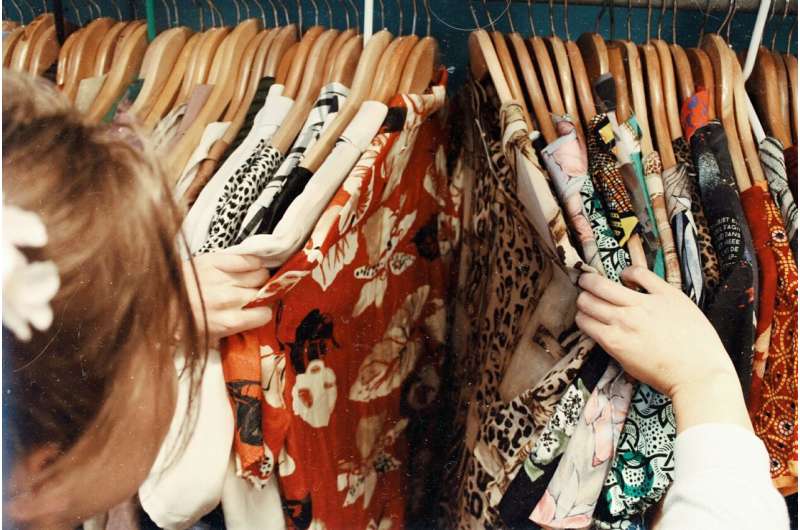This article has been reviewed according to Science X's editorial process and policies. Editors have highlighted the following attributes while ensuring the content's credibility:
fact-checked
trusted source
proofread
Spaces to remake and mend clothes would bring new life into shopping centers, study says

Spaces to remake and mend clothes would bring much-needed life back into shopping centers and high streets, a new study says.
Efforts to wean people away from fast fashion should go beyond sewing workshops in community halls and art spaces.
Chain stores should include stations for mending and modifying clothing, and they should sell more garments designed to be durable and adaptable, experts have urged.
Researchers ran workshops that provided participants with space, support and equipment to help them learn new skills to repair and remake clothing. They found this helped people make more sustainable choices.
Participants were asked to do an audit of their wardrobes and were interviewed at the start and end of the project. They took part in informal discussions with researchers, as well as keeping reflective diaries.
At the end of the process participants thought considerably more deeply about their clothes and purchasing habits, and they engaged in a more ethical and environmentally oriented way.
Their preferred style remained relatively fixed and buying habits were still also based on their budgets.
The study, by Clare Saunders, Anjia Barbieri, Jodie West and Joanie Willett from the University of Exeter, Irene Griffin, from Falmouth University, Fiona Hackney, from Manchester Metropolitan University, Katie J. Hill from Northumbria University, is published in the journal Sustainability.
Professor Saunders said, "Participants generally reported broader and deeper engagement in pro-environmental behaviors at the end of the project compared to at the start. Their interpretations of sustainable clothing were based on personal and social factors, ranging from Bianca, who made occasional functional purchases of fast fashion, to Christine, initially an avid consumer who dramatically tamed her purchasing.
"Our study shows individuals can and do change their clothing practices after participating in a set of activities mimicking a slow fashion cycle, but the extent to which they do so is conditioned by individual financial, emotional and habitual barriers."
Dr. Willett said, "As long as there are cheap fashion outlets and bargain annual sales it will be difficult for individuals inclined to shop a lot to escape entrenched buying habits. Fixing fast fashion requires not just changing individual behaviors but changing practices and processes at every stage of the life cycle of fashion at every level. If dominant fashion tropes persist, attempts to change social practices via workshops like the ones we ran will remain niche. The challenge, then, is to attempt to mainstream our approach.
"If it became impossible to walk down a high street without encountering making and mending stations or running into workshops teaching hands-on skills this would provide the building blocks for real change."
Most participants in the study remained high street shoppers, and there was a slight shift towards charity shops. Most reported that they would "not continue to buy fast fashion" in general except for essentials, like underwear, a significant change.
Their overall spending on clothes appeared, on average, to have increased. This was related to their more discerning tastes post-participation, as they increasingly sought more ethical—and presumably more expensive—clothing items.
Participants reported they thought more carefully about what they bought. They acquired new skills, bought fewer items, sourced clothes ethically, thought differently about how they dress, and were more likely to fix their clothes.
Christine went to lengths to reduce the number of items in her wardrobe when she realized that her bulk purchase of cheap products was leading to a hoard of many unworn items. Susan continued to make only careful purchases that fit her style. Jennifer sought to reduce her clothes spending, to only buy clothes with the right color, fit and style. Bianca tried to think of creative ways to make use of garments she never wore and designed new items from them. She continued occasionally to buy items at the fast fashion retail outlet Primark "because of the budget."
More information: Clare Saunders et al, A Social Practices Approach to Encourage Sustainable Clothing Choices, Sustainability (2024). DOI: 10.3390/su16031282
Provided by University of Exeter




















